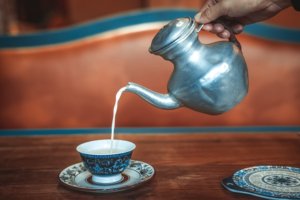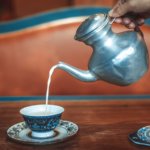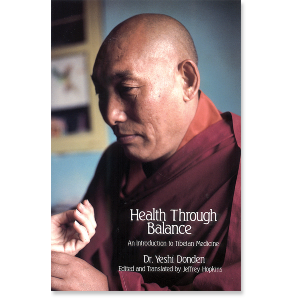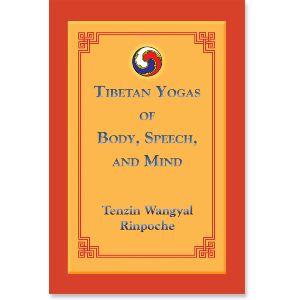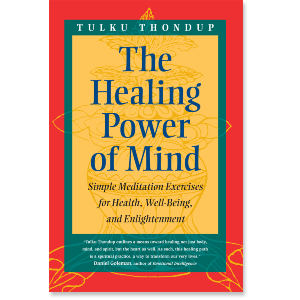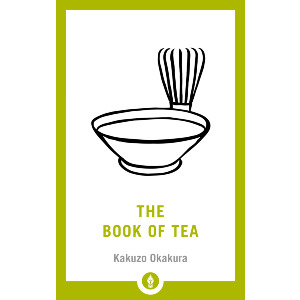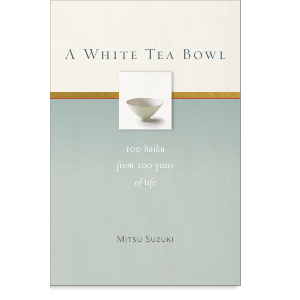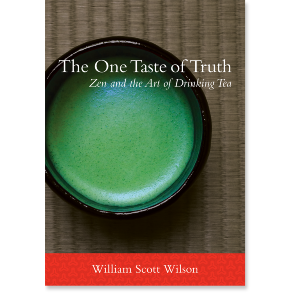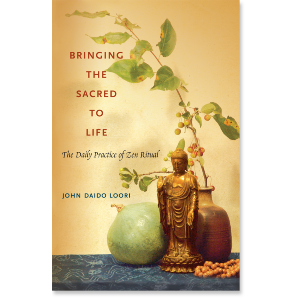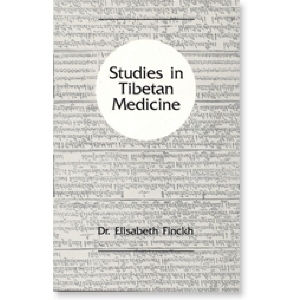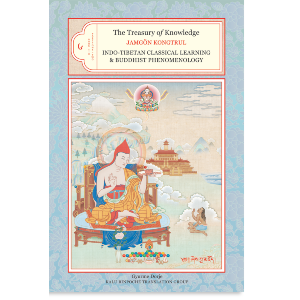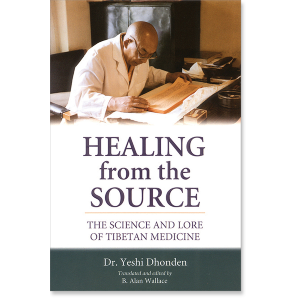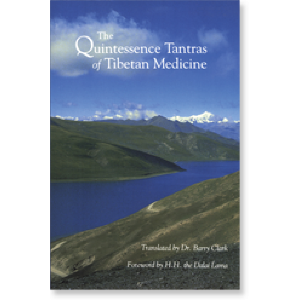| The following article is from the Spring, 1997 issue of the Snow Lion Newsletter and is for historical reference only. You can see this in context of the original newsletter here. |
"Health Through Balance"
with the Ancient Tibetan Philosophy of Medicine
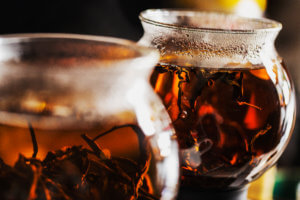
A line of Herbal Teas from a Tibetan Doctor
by Dr. Kalsang Shak, Switzerland
About ten years ago (article published spring 1997), when I first started to mix my own herbal teas based on the ancient principles of Tibetan medicine, I could only make them available to my own family members and some of our friends who were already familiar with Tibetan culture. Once my teas started being produced by the Swiss Hepart Health Company on a larger scale, many more people were able to enjoy and benefit from them. I therefore feel it is important to provide you, my new customers, with a short introduction to the Tibetan art of healing in this newsletter. Tibetan medicine is greatly influenced by Buddhism and we Tibetans consider it to be the jewel of our culture.
It is my sincere hope that many more people will learn about this ancient cultural heritage, and that it will thus survive for many generations to come.
Tibetan medicine is greatly influenced by Buddhism and we Tibetans consider it to be the jewel of our culture.
A Brief Introduction to Tibetan Buddhist Medicine
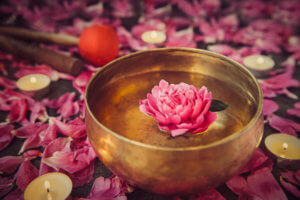
Tibetan medicine is also referred to as Tibetan Buddhist medicine because the original source of medical texts, Gyushi, the Four Secret Medical Tantras, consisting of 156 chapters in four volumes, came from the Buddha Shakyamuni's Vimalagotra teaching 2500 years ago. So from the very beginning Tibetan medicine has been an inseparable part of Tibetan Buddhism.
The following are the Four Noble Truths taught by the Lord Buddha in his first public teaching in Sarnath, India, after his enlightenment: the First Noble Truth is to know the true nature of suffering; the Second Noble Truth is to know the true cause of suffering; the Third Noble Truth is to know the true end of suffering; the Fourth Noble Truth is to know the true path to end suffering.
In the Second Noble Truth, Lord Buddha said that knowing the true cause of suffering means knowing the three poisons of mind which are the true causes of suffering.
These three poisons of mind are:
- Desire
- Hatred
- Resistance to the truth
These three unhealthy states of mind are the main cause of imbalance in the three biochemical humours of the body. They are manifested in various disturbances and disorders, and later in diseases.
These three biochemical humours are:
- Loong (Wind)
- Tripa (Bile)
- Begen (Phlegm)
Each of these three humours originates from one of the Three Mental Poisons.
Loong (wind) imbalance is primarily caused by the mental poison of desire.
Tripa (bile) imbalance is primarily caused by the mental poison of hatred.
Begen (phlegm) imbalance is primarily caused by the mental poison of resistance to the truth.
Mental poison of desire, hatred, and resistance to the truth... do not spring up overnight, but are wrong mental attitudes accumulated over a long period of time.
We should understand that these causes do not spring up overnight, but are wrong mental attitudes accumulated over a long period of time. It is these wrong mental attitudes which bring about the first imbalances in the three biochemical humours in the body. These imbalances remain dormant, with the potential to manifest as diseases whenever other factors, such as unwholesome dietary patterns, improper conduct, seasonal changes, or influences of evil spirits and planets interact with them.
At the physiological level, the Three biochemical humours correspond to various physiological systems of the body:
Loong (wind) acts through the central and autonomic nervous system and affects all the physiological functions of the body. It is therefore the most important of the three humours. Both the Tripa and Begen humours are also under the influence of Loong. It is called wind because it has all the physical properties of the element air: it is light, dry, cool, subtle, soft,volatile, mobile and odourless.
Tripa (bile) acts through the digestive system and is responsible for all the metabolic processes of the body. By nature, bile is hot, like fire. So it has the same physical effects and properties as the element Fire: it is hot rough, pungent, bitter, dry, mobile and has a strong odour.
Begen (phlegm) acts through the structural and fluid systems. It is responsible for all the supportive structures and all the fluids in the body. Phlegm has similar properties and effects to the elements earth and water: it is cool, heavy, dull, sticky, sluggish, moist, stable, soft, smooth, slimy and viscous.
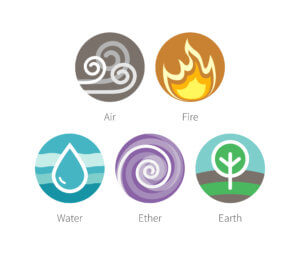
The three biochemical humours at the physical level are by nature composed of five cosmic elements. They are:
- Air (wind humour)
- Space
- Fire (bile humour)
- Earth (phlegm humour)
- Water
By studying the correspondence shown above between the three humours and the five elements, one can see that the various properties of each humour are closely related to the properties of the corresponding elements.

All animate and inanimate phenomena, according to Buddhism, have the same material basis of these five cosmic elements. The application of the science of Tibetan medicine to the fields of anatomy, embryology, pathology and pharmacology is based on the theory of the five cosmic elements. From this theory one can deduce that a disease and the medicines used to treat it are also composed of five elements.
According to the law of similarity and dissimilarity, a doctor would generally treat a disease by using medicines with properties opposite to those of the disease. For example, any disorders due to cold are normally treated with hot remedies and vice versa. But how does a physician know which herbs or medicines have the different properties he requires?

Through his knowledge of the six tastes and eight inherent potencies of a herb. The tastes of an herb result from the predominance of elements in the place where it grows. Therefore the same herb grown in different regions does not necessarily have the same taste and qualities.
The six tastes are:
- Sweetearth & water
- Sourfire & earth
- Saltywater & fire
- Sharpfire & air
- Bitterwater & air
- Astringentearth & air
The eight inherent potencies are:
- Heavy
- Oily
- Cool
- Dull
- Light
- Coarse
- Spicy
- Astringent
These eight inherent potencies of plants, together with the seventeen secondary qualities of the five Elements, are represented in the tastes of plants by an arbitrary grade from one to ten, representing their quality and quantity. A specific herb is thus chosen for a particular disease according to its taste and its inherent potencies as well as its grade.
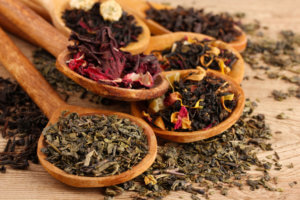
Description of Dr. Kalsang Shak's Natural Health Herbal Teas
Tashi-Delek-Day Tea
Based on the principles of three biochemical humours and five cosmic energies of Tibetan Buddhist medicine, this mixture of twenty-six herbs restores the balance of all the psycho-physiological energies of the body. This tea is suitable for daily drinks during working hours in offices and other places where one is under constant mental and physical stress. The tea is also appropriate for any occasions where one feels that his or her system is out of balance. On drinking a cup of Tashi-Delek tea, one feels fresh and energetic, and at the same time calm and tolerant.
Gonka-Winter Tea
Health is regarded as a state of equilibrium between the three biochemical humours. When they are in balance, the three humours function effectively to maintain health, but if they are out of balance, they become definite source of disorders. The unhealthy body is considered to be one in which the potential for disorders has met with appropriate conditions for those disorders to manifest. The various conditions which may cause the manifestation of disorders include improper diet, improper mental and physical behaviors, disregard of spiritual wisdom, evil spirits, and environmental conditions like heat, cold, wet, dryness and wind. This Gonka Tea is especially prepared from thirty different herbs for the cold and wet seasons when the humours called wind and phlegm are dominant. On drinking a cup of this herbal tea, one feels warm and protected from disorders.
Meto-After Meals Tea
According to Tibetan Buddhist medicine, the most important criterion of a healthy body and mind is that the metabolic processes should be functioning properly at all tissue levels. In Tibetan medicine this metabolic process is called the fire of life, or Meto. All of the physiological functions depend on this fire of life. Therefore the correct intake of food and drinks and a properly functioning digestive system are the basic requirements for a long and healthy life. It is important to remember that the quality of nutrients is far more significant than their quantity.
The Meto herbal tea is prepared from thirty-three aromatic herbs and makes the fire of life strong. It is especially suitable after heavy meals in restaurants, at home and outdoors, or after cold dishes which make your stomach feel uncomfortable. Drinking a cup of this tea soon after meals facilitates digestion and the assimilation of nutrients.
Datsen-Lady Tea
The three biochemical humours on which all psycho-physiological processes depend change in both quantity and quality as a woman becomes older. These changes manifest themselves in the form of disturbances. This herbal Datsen tea, composed of twenty-one herbs, facilitates the smooth transition through the stages of a woman's life, and eases pre-menstrual and menopausal disturbances.
Seru-thang
According to Tibetan medical philosophy, there is a constant separation of the pure and impure parts of food during the process of digestion. This separation is carried out by the actions of the three biochemical humours at the level of the digestive system. The refined parts of these assimilated nutrients then undergo further metabolic changes at the tissue level and also help to form tissues. All along this chain of transformation at the tissue level, separations into pure and impure nutrients continue. The final outcome of all these separations is an extremely refined, subtle essence which is known as the life-energy, dhang. This life-energy is responsible for all the vital functions of the organism in this life. It also acts as an energy base for the transformation of consciousness during death. In a healthy individual it normally takes about six days from the time of ingestion for food to be transformed into dhang. In diseased persons it takes longer than six days and if it does take place the quality of Dhang is diminished. By taking good herbal rejuvenating pills or Seru-thang from time to time, one can shorten this period of transformation and ensure that high quality dhang is produced.
In case of chronic indigestion, there is always inadequate separation of pure and impure nutrients during the process of digestion. This inadequate separation results in the constant production and accumulation of impurities called nin-ma, toxic substances which are carried to all parts of the body by the blood and causes disorders and diseases at any weak points of the organism. Taking Seruthang improves the entire process of digestion and thus minimizes the formation of this toxic sludge called nin-ma.

Dr. Shak's Tibetan Herbal Teas
Switzerland
